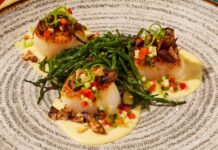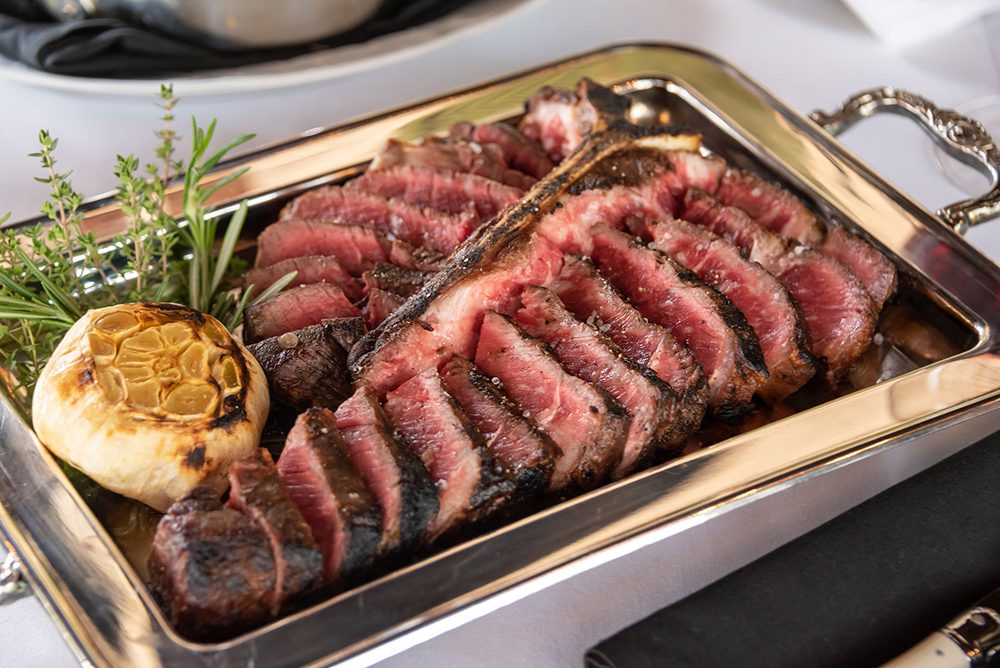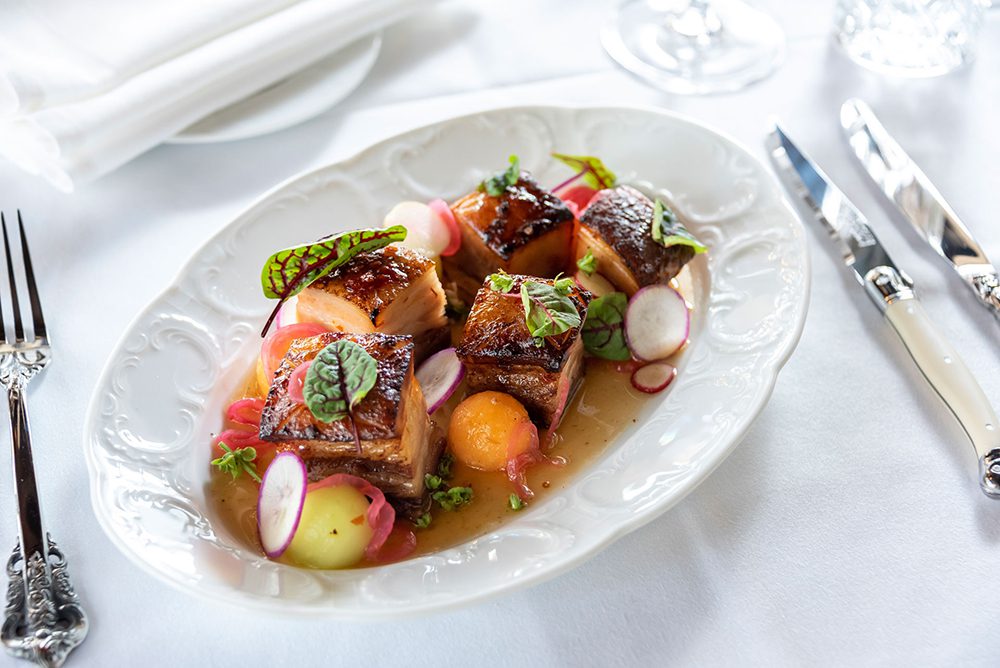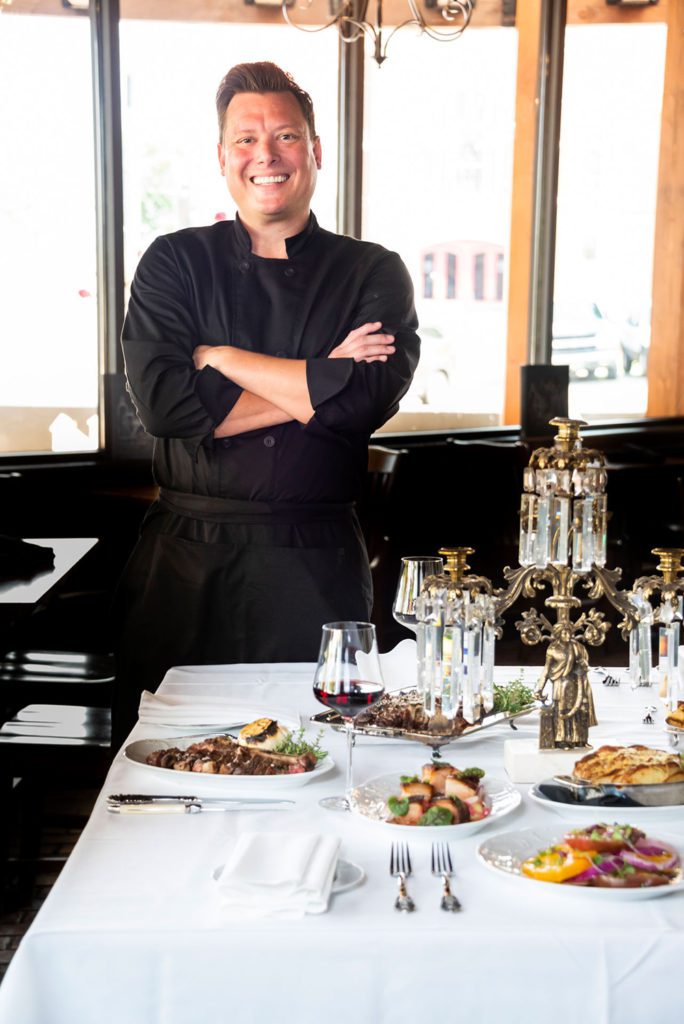Towards the end of 1921, Ernest Hemingway, having survived a war and a pandemic, arrived in Paris. During the next few years, he chatted with Pablo Picasso, got drunk with James Joyce, took a group of friends to a festival in northern Spain, wrote a novel about it, and changed the world.
So picture now, a century later, Trevor Tack: young, excitable, dashing (he looks a lot like the young Hemingway as described by contemporary writers) and mesmerizing, talking about the brand new, Tulsa-based Hemingway steakhouse.
“We want to create a space that tells a story to our post-pandemic world,” he says. “It will reek of indulgence, decadence, and everything screams Hemingway running off to Paris after a plague. Everything will be opulent; everything will be over the top.”
And no, Tack does not mean a place of debauchery. He is conjuring up a place that comforts you, giving you permission to feel happy and to indulge. And the choice of name is quite appropriate. Yes, tall tales of Hemingway-esque excesses fueled a whole Lost Generation of louche impostors imbibing in Parisian cafes … but Hemingway was also a very hard worker. His time in Paris was to change novels, writing, and the English language. And perhaps Hemingway steakhouse will modernize or even explode what Tack views as the stodgy old institution known as a steakhouse.
“It’s not just hunks of meat, and not just for birthdays,” he says.
Today, Tack’s presiding over one of the endless trials of a new menu item: French onion soup.
“We have a brioche crouton with gruyere and thyme leaves – it takes 24 hours to make the veal stock with caramelized onions,” he says. “The crouton and big wafer of cheese are in your bowl, and the soup is poured over it tableside. You smell it, and you just know it’s traditional French onion soup. But it’s easy to eat, no glops of cheese, and so elegant.”
By now, you realize that it’s not your regular steakhouse if they spent weeks developing a perfect-tasting soup that takes days to prepare.
The rest of the menu eliminates the old fib of a rule that when in a steakhouse, you shouldn’t order anything that isn’t steak. You can start with a torchon of foie gras which takes days to make, or lamb “lollipops” which feature thick, soy-lacquered lamb chops served with peanut-mint chimichurri and bright, elegantly cut Vietnamese chili pickles (a development of a dish Tack invented when he presided over Tulsa’s Bodean).
Presentation is paramount. Just check out the pork belly confit, a dish with brightly colored balls of orange and green compressed melon, glowing purple and amber slices of condiments – including chipotle and mezcal pickled onion – strewn across the plate.
“I want to do fun stuff, fearless,” says Tack.
The rest of the menu continues in the same vein: Fresh, house-made pastas that change at the chef’s whim, roast field chicken with black truffle jus, salmon dishes, and rich meaty delights such as a short rib “pot au feu” and a huge lamb shank, served cave-man style, bone and all, nestled in a bed of vegetables and gravy.
And then, of course, there are the steaks.
While Tack rejects the traditional steakhouse experience, he’s a steakhouse veteran – having eaten in countless places in New York and Chicago, all part of his research. He developed the Lounge at the Tavern, a retro look at the 1950s that is one of Tulsa’s most highly regarded traditional steakhouses. He knows his stuff.
“We’ve bought the space that used to be Mary’s,” says Tack, “and I’m building my own walk-in cooler to use as an aging room.”

Bone-in ribeye with potatoes au gratin 
Prime porterhouse steak 
Roasted bone marrow with parsley salad 
Braised pork belly 
Bone-in ribeye with potatoes au gratin
There, you’ll see rows of primal cuts hanging in the cold air, the way the best traditional steakhouses have always dry-aged meat – yet all but impossible to find nowadays. They will also wet-age some steaks for those who don’t like the rich, evocative dry-aged flavor.
“We’ll get the meat from small farms when we’re able, but we’ll use larger co-ops too. Whichever is best. We’re not beholden to a single farm,” says Tack. Yes, there will be dry-aged strips and porterhouses – it’s mostly short loins that are hanging in the aging room – and more besides.
“We’ll have A5, snow beef,” Tack continues, referring to the top grade of Japanese wagyu and to a cut that’s almost mythical, rarely seen except in food blogs, imported from Japan with so much marbling it looks like snow.
Some of the steaks will be reverse-seared, some of the filets will be sous-vided, but Tack hews to tradition, and most are broiled.
“We got the best broiler we could from a Dallas firm that does custom kitchens,” he says. “Brett and I designed every inch of that kitchen and it’s just the nicest kitchen I’ve ever worked in.”
Brett is, of course, Brett Rehorn, a veteran restaurateur known for his whimsical yet evocative designs at Kilkenny and Nola’s. So you know the decor, designed by Rehorn and Tack, will be painstaking in its attention to detail.
“Lots of oil paintings, rich wallpaper, dark woods. It will be a whole new experience,” Tack concludes. “You’ll have to experience it for yourself.”




























